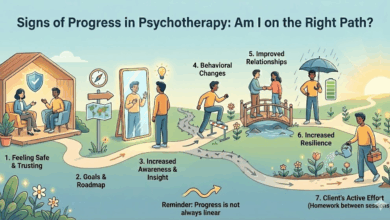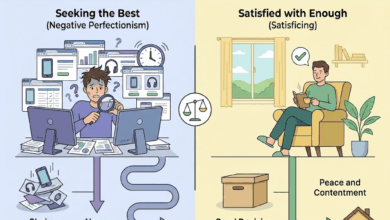How Loneliness Changes the Way We See the World: Insights from Cognitive Science

The World the Lonely See Looks Slightly Different
A new study titled Lonely Individuals Process the World in Idiosyncratic Ways reveals that loneliness affects not only how we feel but also how we perceive reality itself. Conducted by researchers at the University of Chicago, this research set out to explore whether chronic loneliness could alter how the brain interprets the world; and the answer was yes, more deeply than we thought.
Participants in the study, each with varying levels of self-reported loneliness, were shown a series of everyday images — streets, faces, natural scenes, and social situations — while their brain activity was monitored through fMRI scans. The researchers found that the brains of lonely individuals processed these scenes in less synchronized ways compared to those who felt socially connected. While most people’s brains reacted in similar patterns to familiar social images, lonely participants’ brains followed unique, less aligned paths.
In simpler terms, lonely individuals experience the world more subjectively and personally. Their minds rely less on shared cultural or emotional cues and more on internal interpretations. For instance, when shown an image of two people talking warmly, a lonely person might notice details — body angles, eye contact, the distance between them — that others overlook, yet miss the overall emotional tone. Their perception becomes detailed but disconnected from the shared feeling of the scene.
The authors call this phenomenon a form of “perceptual drift.” The social brain, when deprived of interaction for long periods, subtly rewires itself. Neural circuits that once synchronized with social signals begin to process them differently, making the world feel both more unique and more isolating. This perceptual change reinforces loneliness, creating a feedback loop where the person becomes more attuned to solitude and less able to resonate with others.
Psychologically, the insight is profound: loneliness isn’t just the absence of people, it’s a shift in how we exist among them. Over time, it alters our emotional language; what joy, sadness, or connection mean to us. That’s why rejoining social life after long isolation can feel awkward or alienating; the lonely mind has learned to read a slightly different emotional map.
Yet the study also hints that this perceptual uniqueness isn’t entirely negative. Some lonely individuals demonstrate heightened creativity and sensitivity. Their isolation, by detaching them from social norms, can make them notice subtleties others ignore; patterns, textures, emotional nuances hidden in plain sight. Many artists, writers, and thinkers have described this paradox: solitude as both wound and window.
Still, when loneliness becomes chronic, perception itself can turn against the self. Without regular emotional feedback from others, the mind starts relying on its own echo; and that echo can distort reality. The person may misread social cues, overinterpret silence, or feel unseen even when they’re not.
According to the researchers, one key to breaking this cycle is rebuilding shared experience. Even small acts — watching a movie with someone, having a real conversation, collaborating on something simple — can reawaken the brain’s sense of synchrony. These shared moments remind the mind that perception doesn’t have to be solitary.
In the end, the study suggests that loneliness is not just an emotion but a filter; a subtle lens that colors how the world looks and feels. For the lonely, reality becomes a bit quieter, sharper, and sometimes more beautiful, but also harder to share. And maybe the first step back to connection is not seeking noise, but learning to see together again.
Source: arxiv.org – Lonely Individuals Process the World in Idiosyncratic Ways




